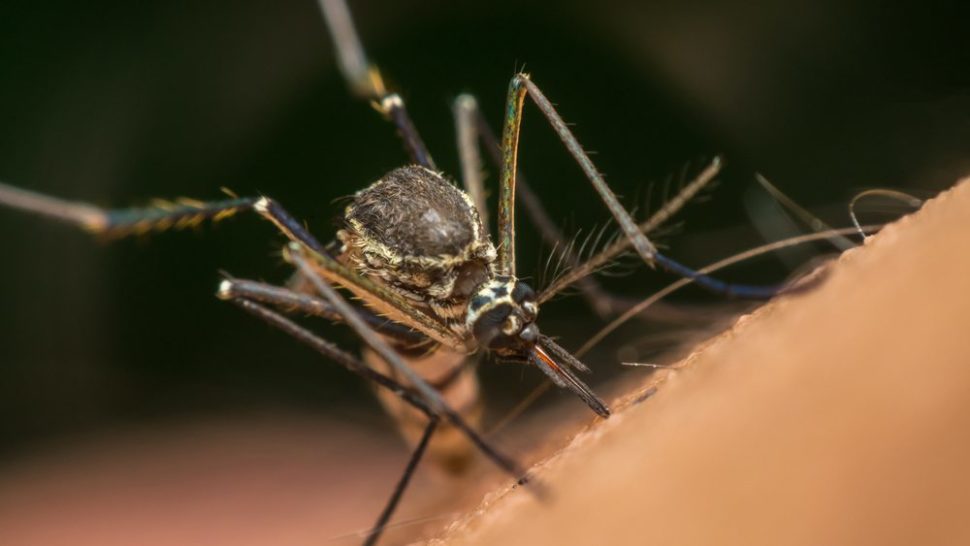If you asked: How do I make neuroprosthetics that won’t harm the surrounding tissue but are firm enough to be inserted into the body? Mosquitoes just answered the question!
In the upcoming sci-fi thriller flick Upgrade, a technophobe with a broken soul and body gets a chance to avenge the death of his wife. Normally he wouldn’t be able to take on such a challenge.
However, thanks to a neural implant that gives him superhuman powers, he’s up to the task.
Judging by its Red Band trailer, the film is stylish, daring, and brutally violent. Its narrative is set in the near future where technology controls every aspect of life.
Theoretically speaking, brain implants in the future would be AI-enabled, and would potentially be able to endow people with superhuman intellectual and physical abilities.
Now, while speculation fits the theory, engineers are still struggling to find a way to insert neural implants without crippling the test subject.
The Engineering Dilemma of Neuroprosthetics
Neuroprosthetics, also referred to by neural or brain implants, are thought of mainly as an artificial bridge to reestablish communication between the nervous system and the brain.
In cases where nerve connections are damaged following an injury or disease, implantable devices would help restore sensory and motor functions.
However, the implantable devices currently available are rigid. These can cause friction between the surrounding biological tissue and cause inflammation.
Scientists have investigated the use of different materials for more flexible neural implants but they naturally don’t lend them to effective insertion into the soft tissue of the hippocampus.
Don’t confuse hippocampus with hypothalamus. The latter is the gland inside your brain that releases the “cuddle hormone”, among other vital functions.
Located in the temporal lobe of the brain, the hippocampus is one of the centers of memory and spatial orientation.
Diseases (such as Alzheimer’s, epilepsy) and inflammations can cause lesions to the hippocampus, resulting in memory problems (amnesia, spatial memory loss), and can also affect emotional responses.
In the future, neural devices, and other brain-computer interfaces, are predicted to be used as devices that boost memory and intelligence. More immediately, however, these devices will likely be created in order to help repair brain and nervous system damage in humans and animals.
Mosquitoes Have it all Figured out
As it stands, neural implants sit where prosthetic technology was in the 1950s, or laser eye treatments in the 1960s and 1970s.
Before getting to what neural implants can or can’t do, engineers are still trying to develop neuroprosthetics that they can safely insert into the brain.
But that doesn’t mean we necessarily have to wait for decades to overcome that engineering problem.
Nature, as always, has found ways around many engineering roadblocks long before we stumble upon them.
Researchers at Case Western Reserve University (Ohio) have taken clues from mosquitoes to develop a flexible neural device that can be implanted without traumatizing the brain tissue.
Mainly, it’s the clever and tricky mechanism mosquitoes use when they bite their prey that provided CRWU engineers with a solution.
Has it ever occurred to you how a puny mosquito can cut thick skin open to suck blood? For one thing, it has a Swiss Army knife-like weapon.
A female mosquito uses two tiny saw-like needles to make an opening in the skin of a human or an animal. Two other arms hold tissue still for making the incision. Then, the mosquito releases two other needles that spread the skin to make a way for the proboscis, the blood-sucking straw, to go smoothly inside to the blood vessel.
Andrew Shoffstall, a biomedical engineer at CRWU, was reading a report about the Zika virus, describing how mosquitoes bite, when the eureka moment came.
This sophisticated mechanism of mosquitoes provided a template for Shoffstall and his research teammates to design and 3D-print a prototype for a flexible plastic neural implant with an insertion guiding scaffold.
Researchers replicated only the mosquito’s guiding needle, which makes their device more of a bio-inspired innovation than a full-on emulation of the mosquito’s MO.
Semantics aside, the team intends to keep investigating mosquitoes and see what other inspiration they can find.



















Comments (0)
Most Recent